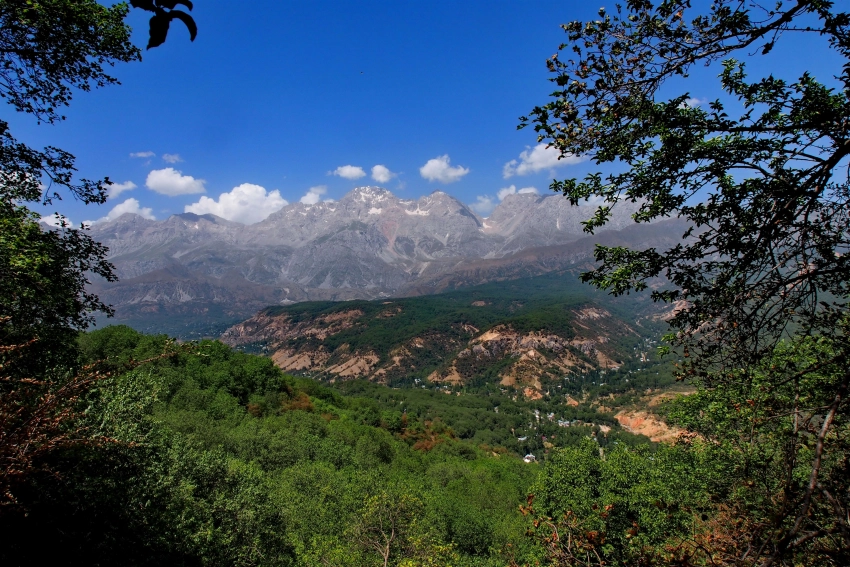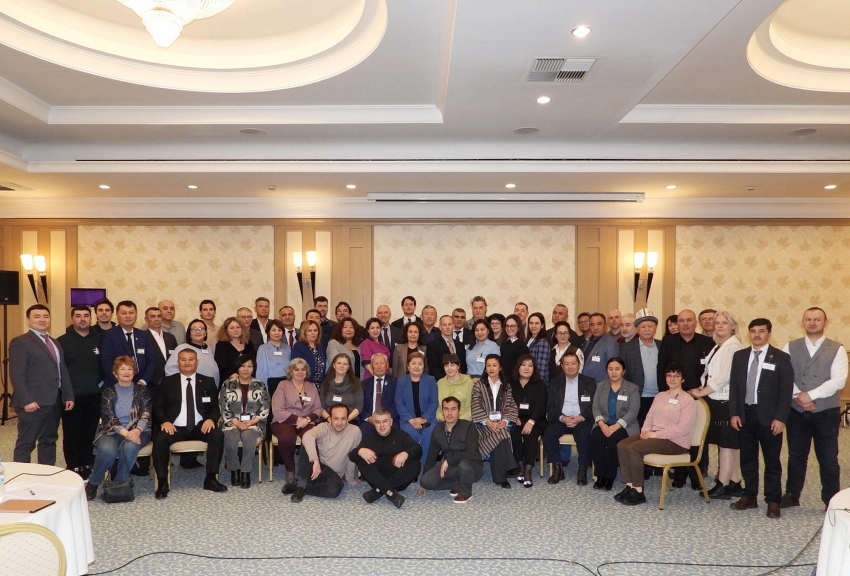KGZ28: Key Biodiversity Area Upper Kumtor River and Sarychat-Ertash Nature Reserve

Square: 134 000 ha.
KBA category: А1, В1
Species that initiated the designation of KBA [and other globally threatened species that are present in the KBA but have not been confirmed to meet the global KBA criteria]: Panthera uncia, Berberis kaschgarica, Saussurea involucrate, Taraxacum syrtorum, [Falco cherrug].
Availability of protected areas: yes
Settlements on the territory of the KBA: no

The Sarychat-Ertash State reserve's office is located in the Barskaun village. On the western side, the border of the reserve adjoins the territory of the Kumtor gold mining plant. Settlements adjacent to the territory of the KBA: Ak Shiirak is a high-mountain village in the Jeti-Oguz district of the Issyk-Kul region of Kyrgyzstan. The administrative center of the Ak-Shyyrak ayil district. According to the 2009 census, 523 people lived in the village.

General description: The location is in the Issyk-Kul region, 350 km from the capital of Kyrgyzstan, Bishkek, at an altitude of 3600-4400 meters above sea level in the zone of permafrost and glaciers. The Kumtor River is one of the tributaries of the Naryn River. The river is fed by natural precipitation as well as meltwater generated by melting snow and glaciers, with precipitation flows (in the form of snow and rain) generally accounting for 80% of all natural water flows. In permafrost conditions, the movement of groundwater is very difficult. As a result of the melting of glaciers, streams are formed in the valleys, which, merging together, create the Kumtor River. The volume of the Kumtor River in the total water flow of the Naryn River is about 2%.

Meltwater from the Petrov Glacier first flows into Petrov Lake, which was formed due to the retreat of the glacier and the formation of a natural moraine dam (a moraine is rocky deposits remaining after the melting of a glacier). Since part of the KBA is located in the eastern part of the Middle Tien Shan at an altitude of about 4000 meters above sea level, in the permafrost zone, the vegetation here is sparse.

Alpine meadows grow here, in which various types of cobresia predominate. During the short warm period, the alpine meadows amaze with their variety of colors thanks to the small-petaled orange, alpine aster, cold primrose, Tien Shan forget-me-not, chrysalis, etc. An unforgettable palette and aromas are added to the eternal freshness of the alpine meadows at this time (July - early August).
At the most extreme altitudes, adapting to the harsh conditions of the highlands, plants grow in patches. Of the 250 plant species characteristic of zonal tundras, 201 species are found in Kyrgyzstan. Among them, lichens, mosses, cryophytic grasses, sedges, cushions and forbs predominate.

Alpine meadows are attractive to argali (mountain sheep) and ibex, followed by their integral companion, the snow leopard. Voles, wolves, foxes, bears, badgers, stoats, and wild boars come here from the middle mountains. Invertebrates are also richly represented - worms, spiders, bumblebees, ants, etc.

Sarychat-Ertash State Reserve. Sarychat-Ertash State Reserve is a specially protected natural area of Kyrgyzstan, formed in 1995, which is located in the Issyk-Kul region. It was organized by Decree of the Government of the Kyrgyz Republic dated March 10, 1995 in order to preserve unique natural complexes, rare and endangered species of animals (for example, snow leopard) and plants of the syrt zone of the Issyk-Kul region, as well as maintaining the overall ecological balance of the region.The area of the reserve is 134,140 hectares, including 72,080 hectares - the core of the reserve, and 62,062 hectares - the buffer zone.

Until recently, direct information about the flora of the reserve, except for data on vascular plants, was absent.
In 2008, researchers from Issyk-Kul State University compiled a floristic list of plants growing in the reserve, including 293 species.

An inventory of medicinal, dyeing, poisonous, as well as endemic and rare plants has not yet been carried out. At the same time, the presence of some species included in the Red Book of Kyrgyzstan was noted, namely Semenov's onion, Rhodiola linearifolia, Kyrgyz kopeck, Tiensha umbelliferous, Saussurea involucra, Edelweiss poppy.

The inventory of the reserve's mammals has not yet been completed. According to preliminary data, about 25 species live there. At the same time, the bird fauna has been sufficiently studied, and currently there are at least 87 species in the reserve. Despite the fact that there is currently no evidence of the presence of reptiles in the reserve, targeted research may be able to identify some species of herpetofauna. Similarly, in the Nature Chronicle of the reserve there is no data on the ichthyofauna, which probably reflects the real state of affairs, due to harsh climatic conditions and the small size of reservoirs. An inventory of the invertebrate fauna was not carried out; It is expected that the list of species will be very small due to the climatic conditions of the highlands.

Ecology: In the upper reaches of the Kumtor River there is a mine of the same name, where open-pit gold mining takes place. The Kumtor mine is one of the highest mining enterprises in the world. Gold production at the gold recovery plant began in 1997, and the plant is scheduled to close in 2026.

The ore is transported to a crusher and then to a factory where the ore is crushed and the gold is extracted using carbon in solution technology. Once the ore is processed, gold is cast from it in the form of doré bars, containing up to 80% of the precious metal.
Doré bars produced at the Kumtor mine are purchased by Kyrgyzaltyn Open Joint Stock Company for further processing at its refinery in Kara-Balta. The Kumtor Gold Company CJSC , which was involved in gold mining, was repeatedly presented with claims and accusations of violating environmental requirements. In 2022, the Kumtor gold deposit completely became the property of Kyrgyzstan.

* And its parent company Centerra Gold Inc. In Canada.










